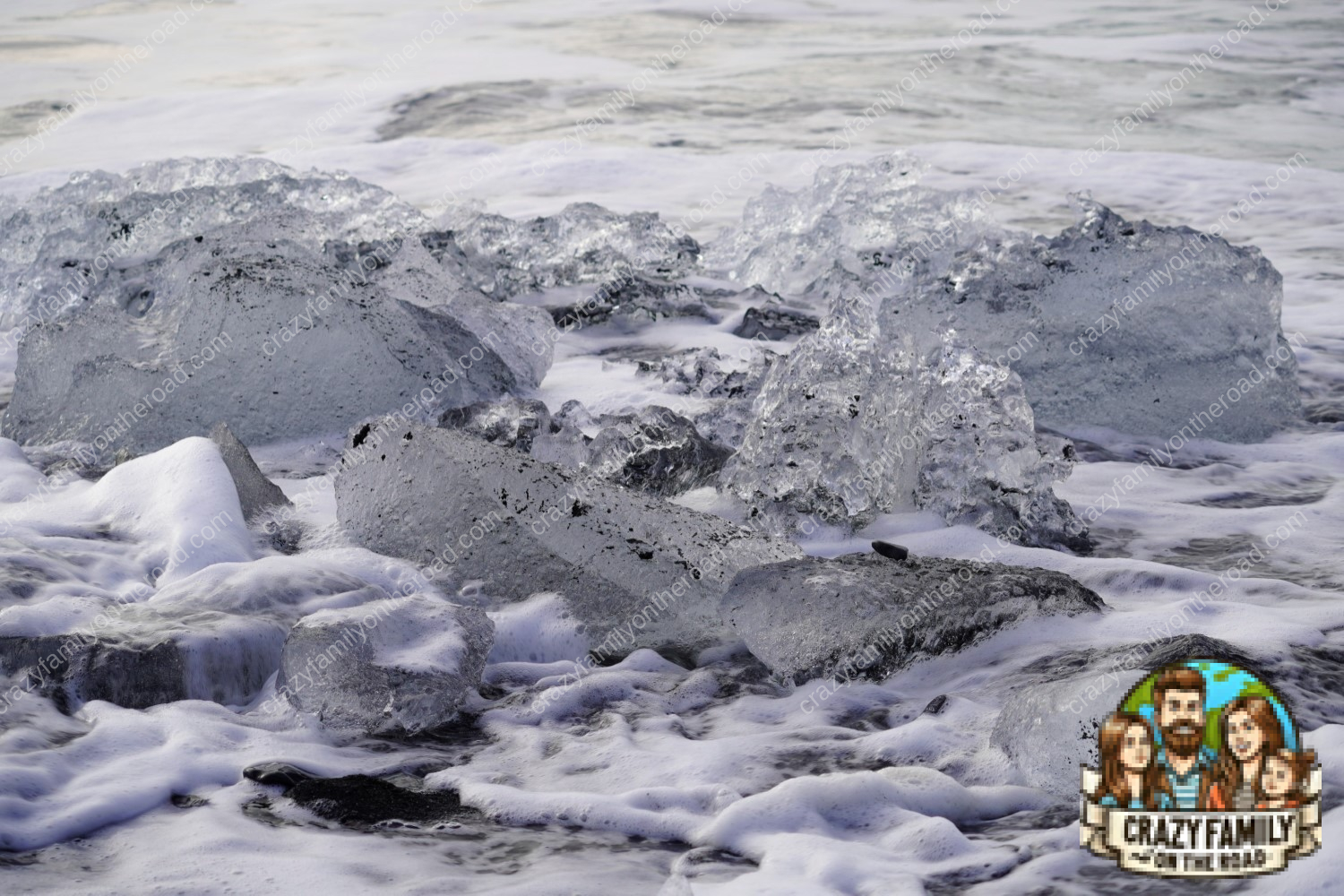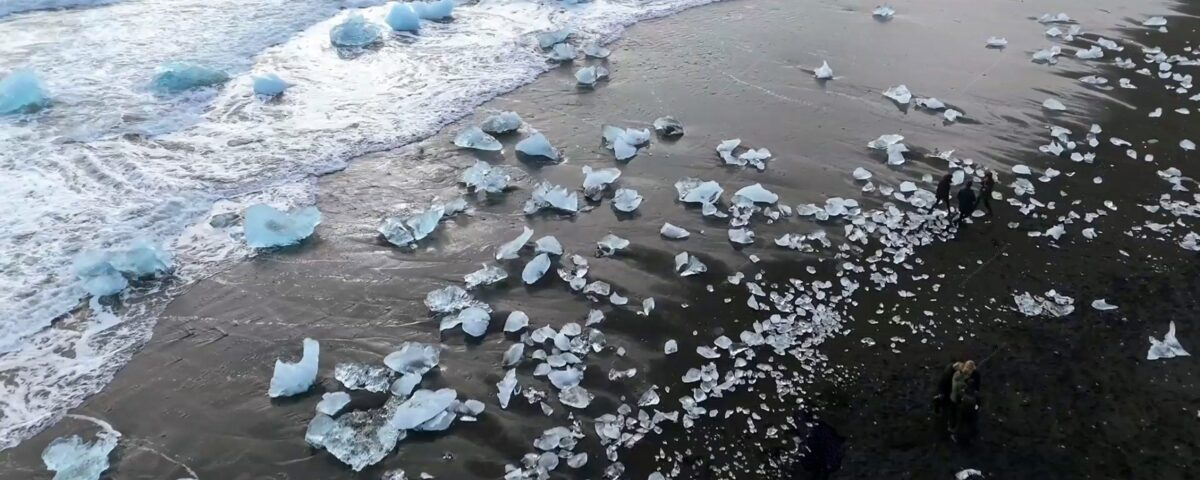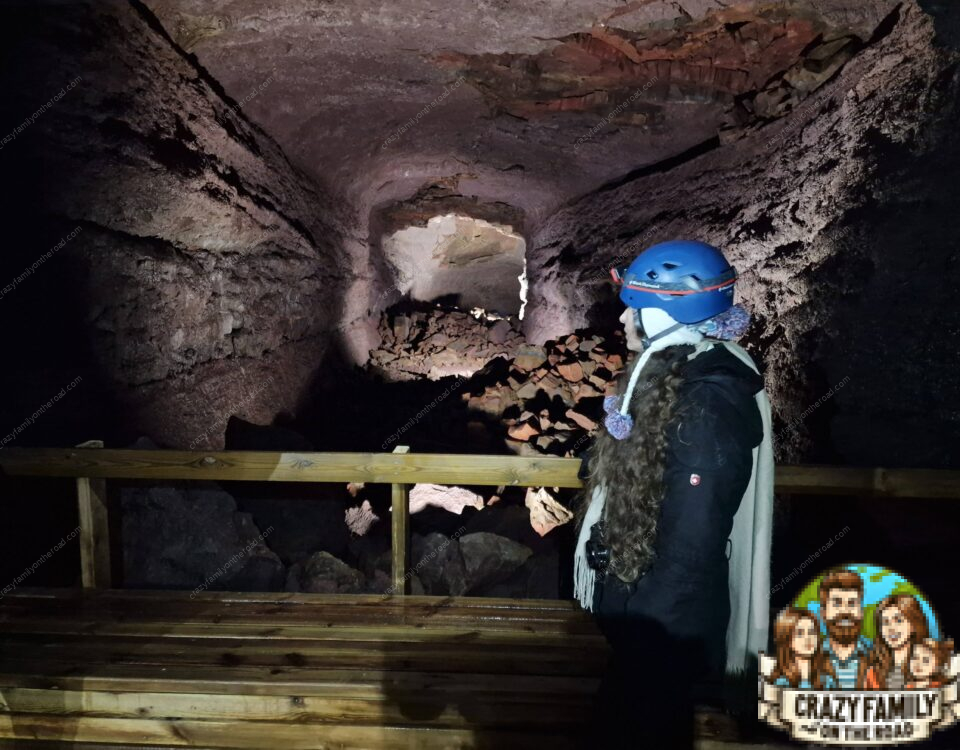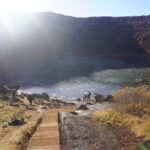
Kerid Crater
28. October 2024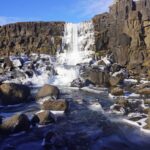
Golden Circle
29. October 2024Diamond Beach: sad beauty
Diamond Beach is a real pearl of Iceland. It’s no wonder it’s a must-visit destination for nearly all tourists. She is unique, one of a kind and will leave a deep impression on you.
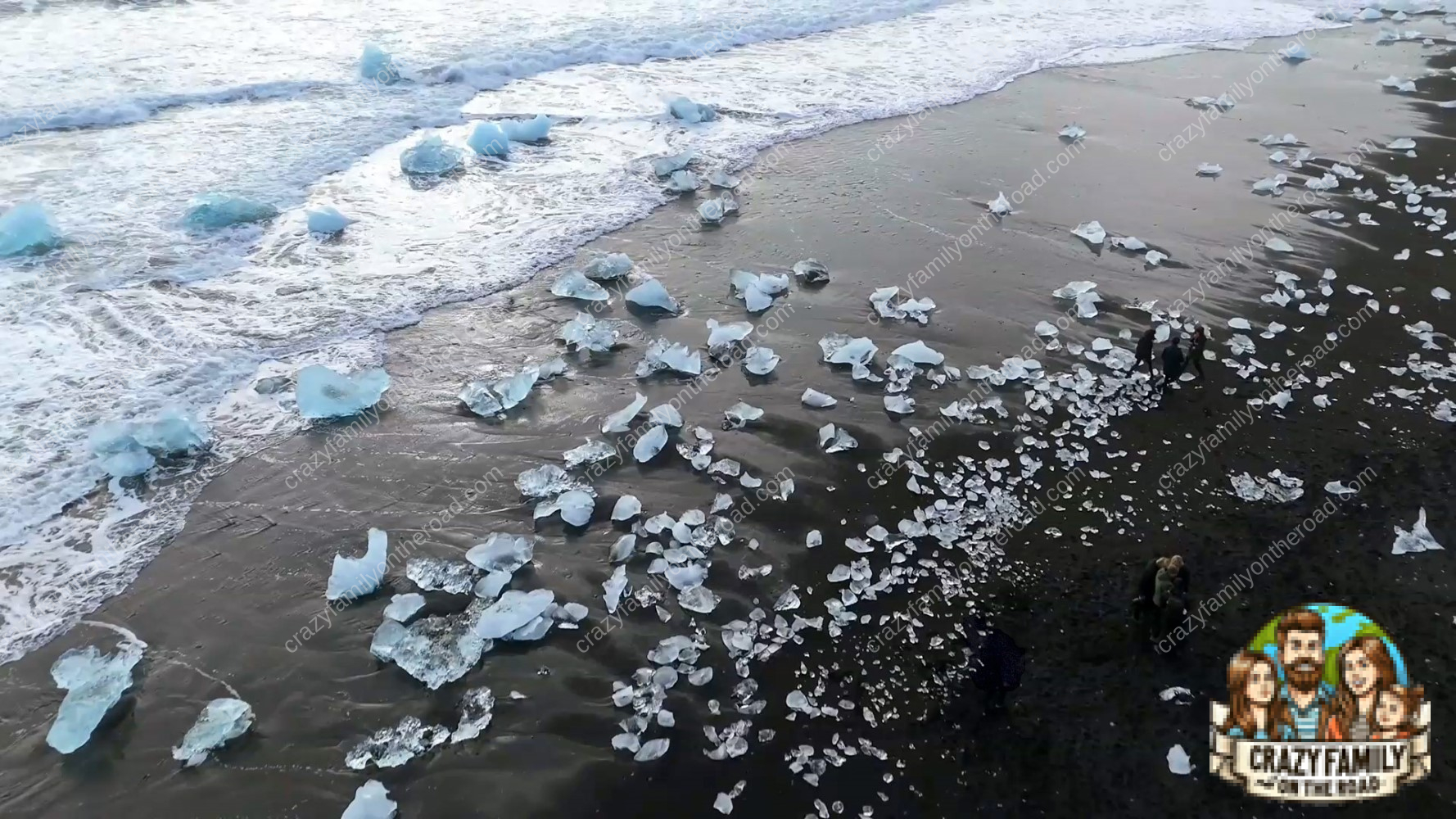
Approximately one kilometre long, the river flowing from Glacier Lagoon divides it into two parts. No matter which side you head to, both are equally breathtaking.
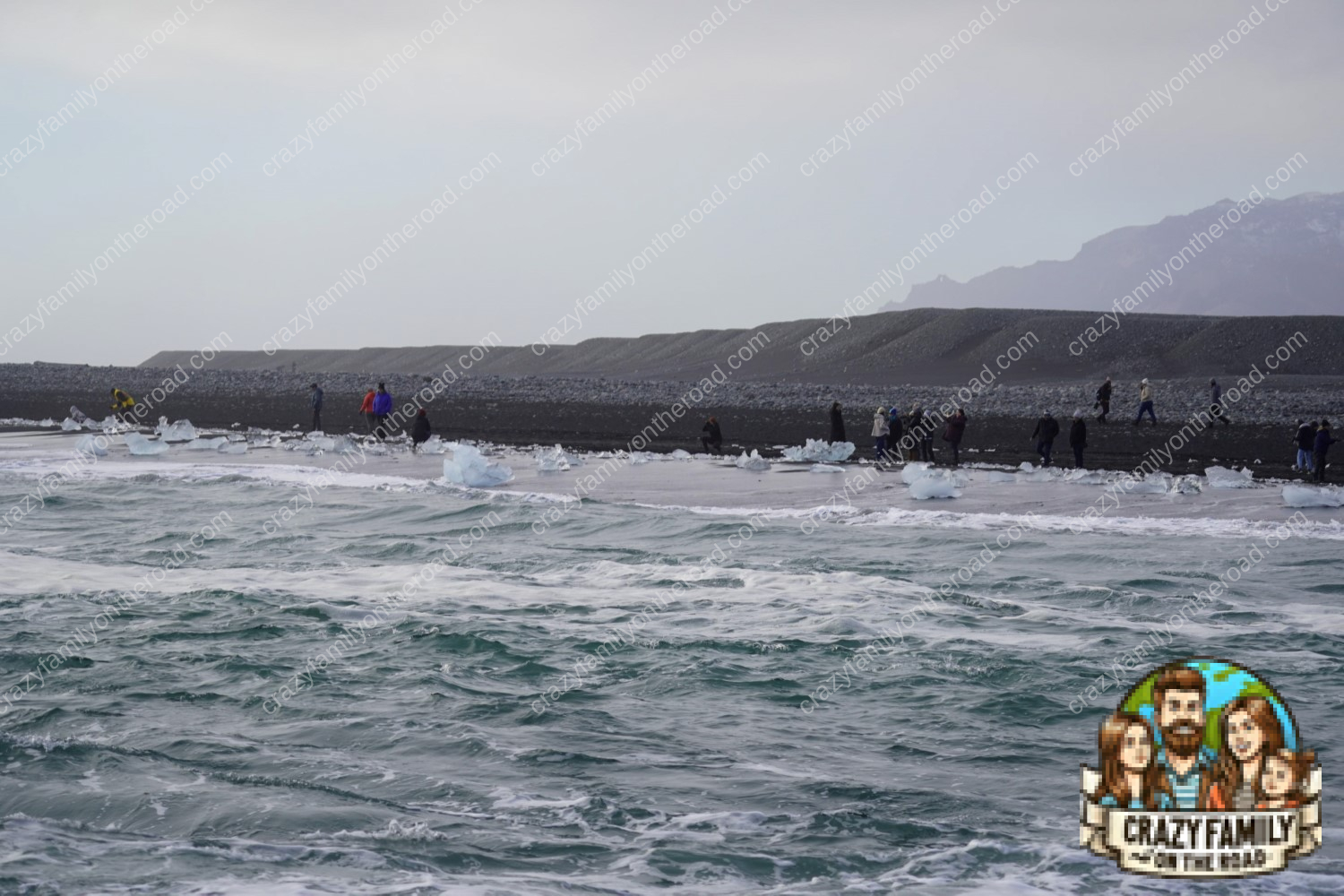
Beach full of diamonds
As soon as you step out of the car, your eyes are immediately struck by the dark, completely black sand, formed over centuries of volcanic activity. Tiny white crystals glisten within it, creating a mesmerizing contrast. With every step forward, you begin to notice more and more ice floes, each with its own unique shape and size. They are scattered elegantly across the beach. Carved by the natural force of waves and shaped by time, the most beautiful pieces resemble dazzling diamonds, scattered like treasures along the shore.
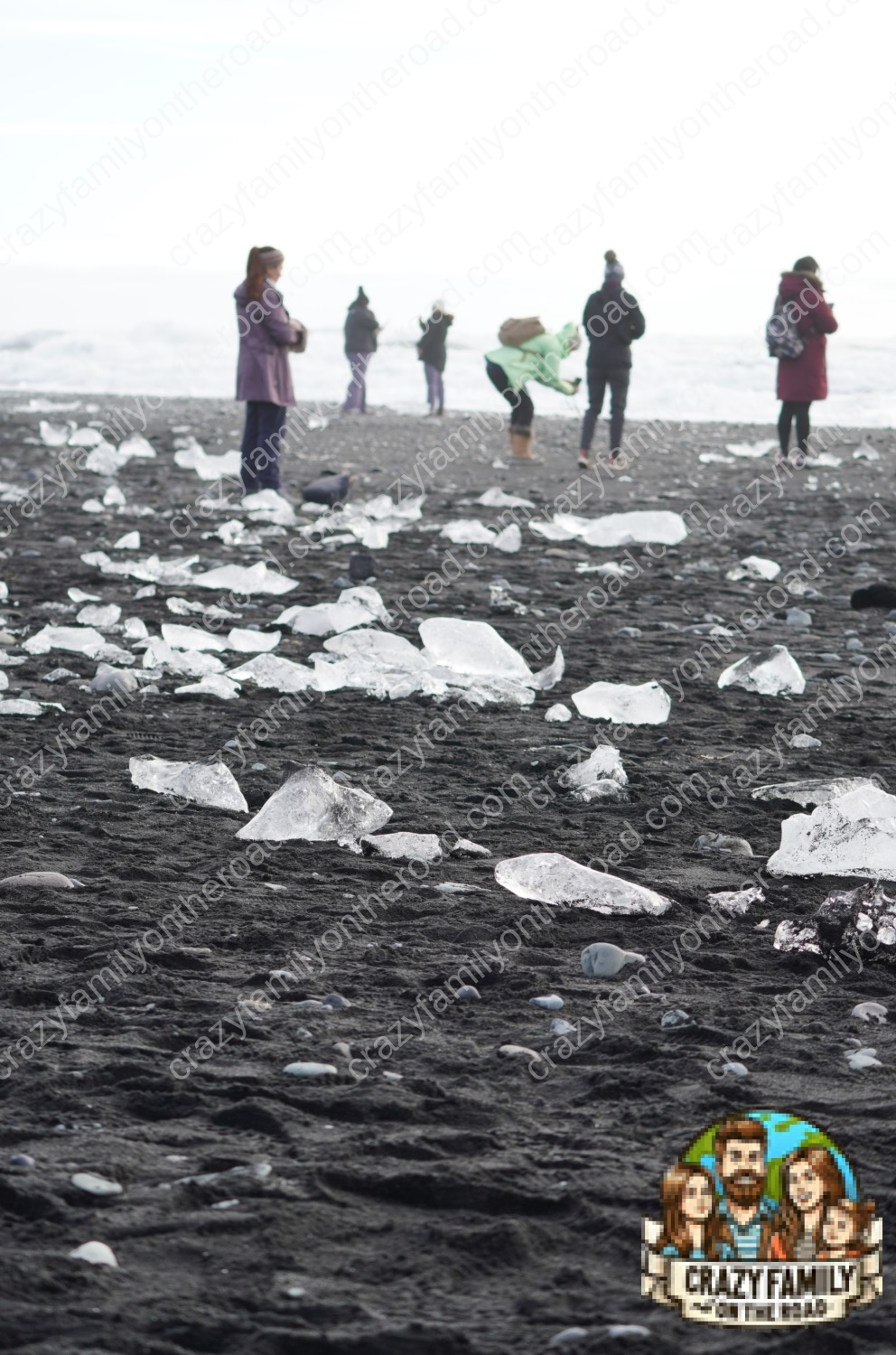
Most of them can be found near the shore. They gradually arrive here from the glacial lagoon of Jökulsárlón. First the waves play with them and then they are washed up on the beach, taking other one with them.
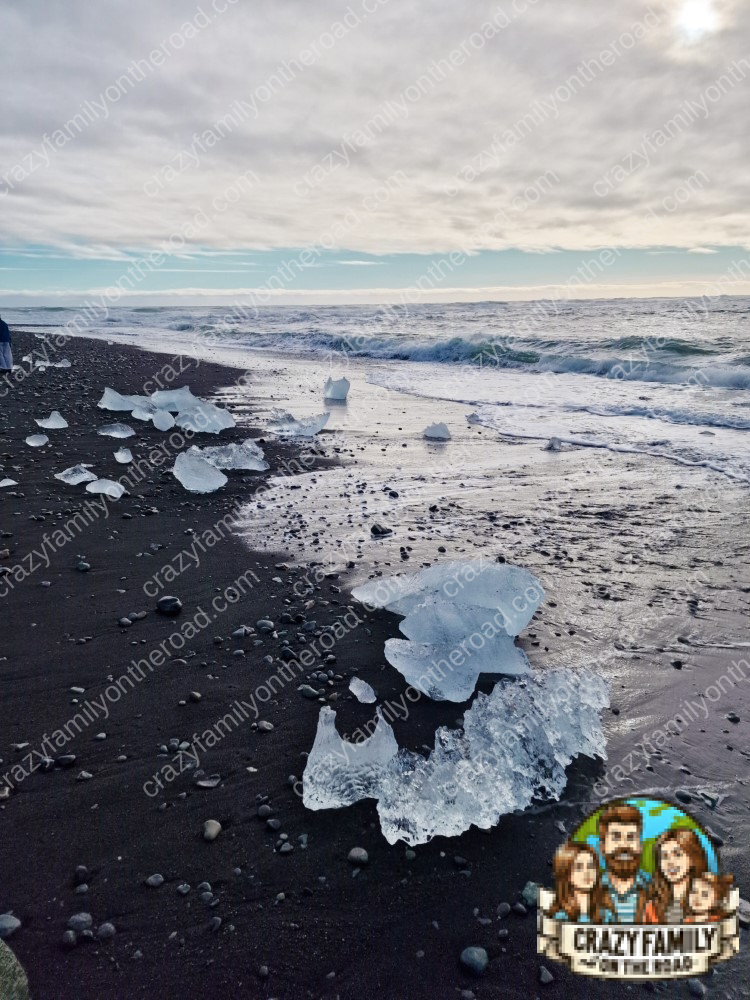
If you stay on the beach longer, you can watch how it is constantly changing and how sometimes meter-long chunks of ice appear and disappear in front of you
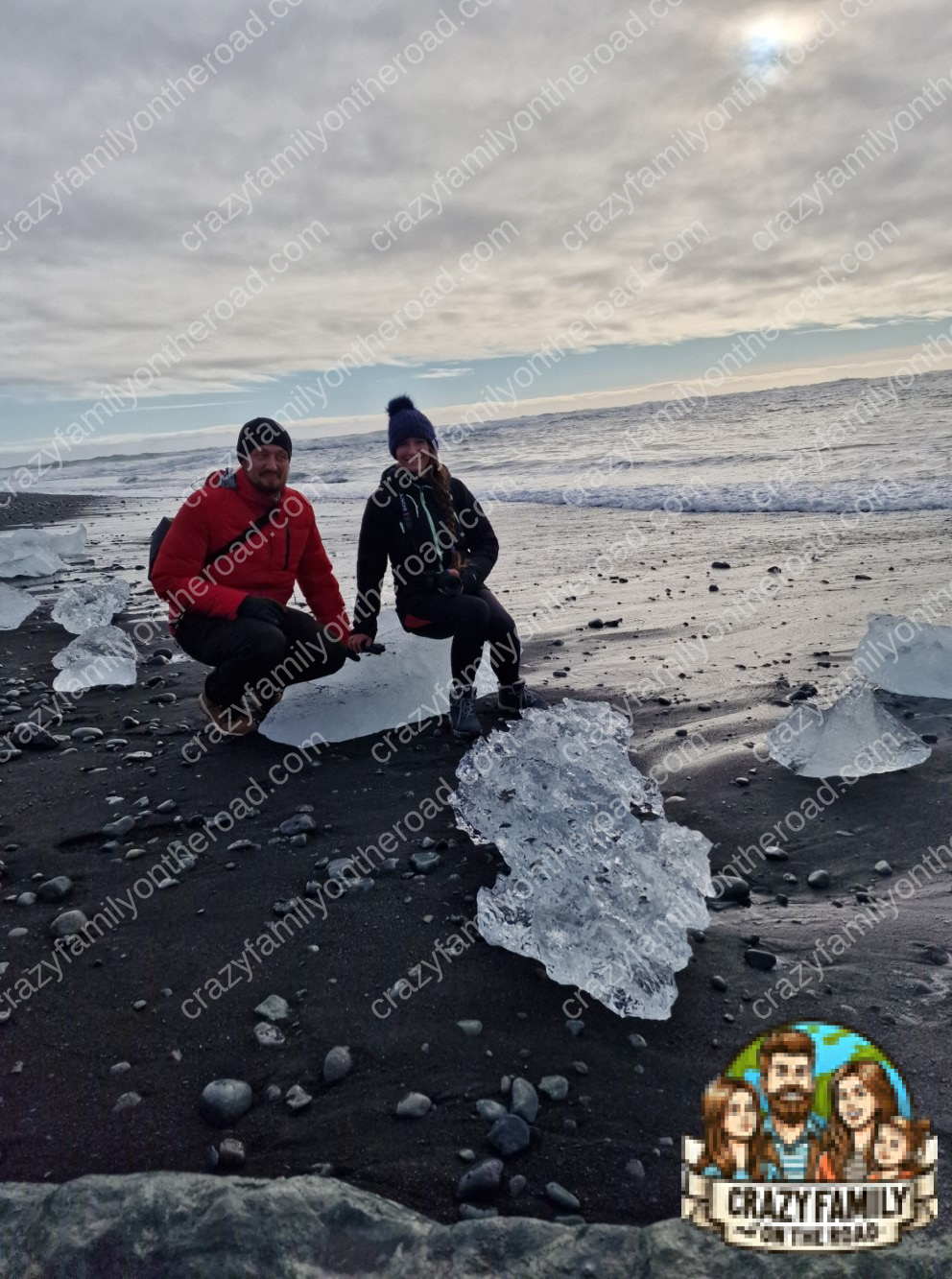
Some are white, some still have the blue colour you will see if you go to the glacier.
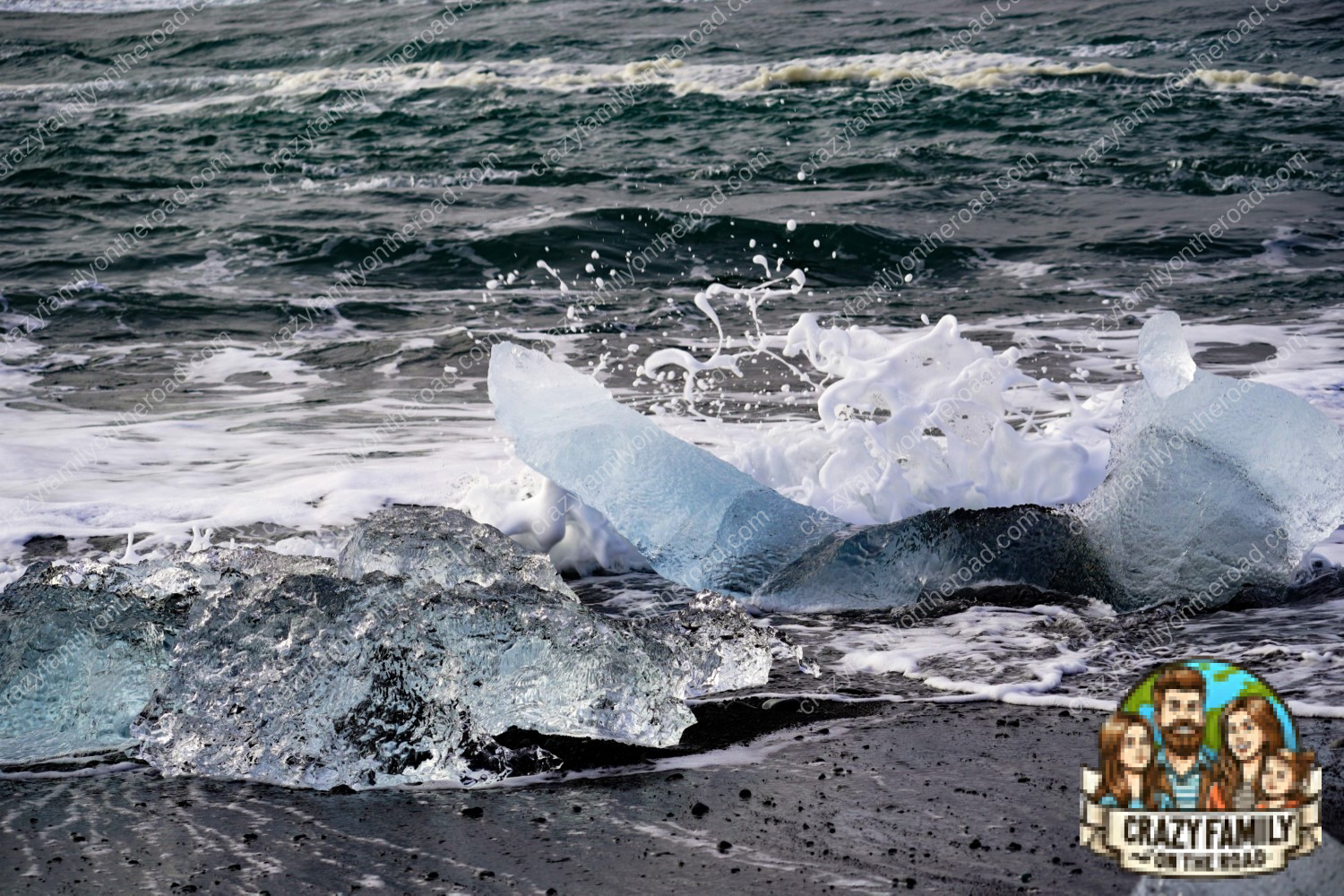
Watch out for the waves
Beyond the captivating ice “diamonds,” it is crucial to stay alert for strong tidal waves that can unexpectedly surge far up the beach. The waves here are especially powerful, and even during the summer months, the water remains icy cold. As a precaution, local warning signs emphasize the danger and urge tourists to stay out of the water, as the tide can quickly become both treacherous and unpredictable.
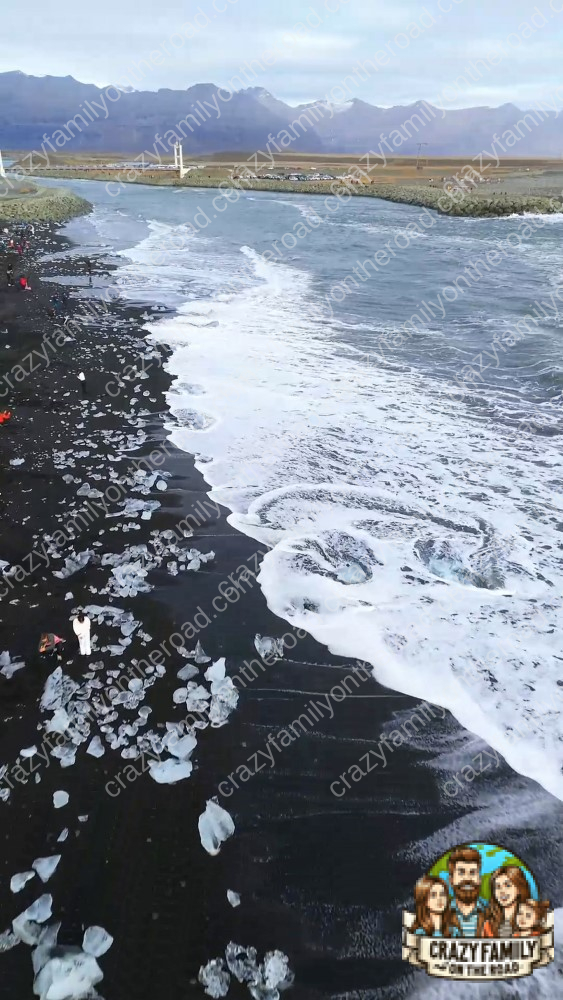
Yet, this didn’t deter tourists – and it certainly didn’t stop us from heading straight to the shore. As we ventured closer, we had to remain constantly on high alert, ready to dash away from each sudden tidal wave. And believe me, there were plenty of them!
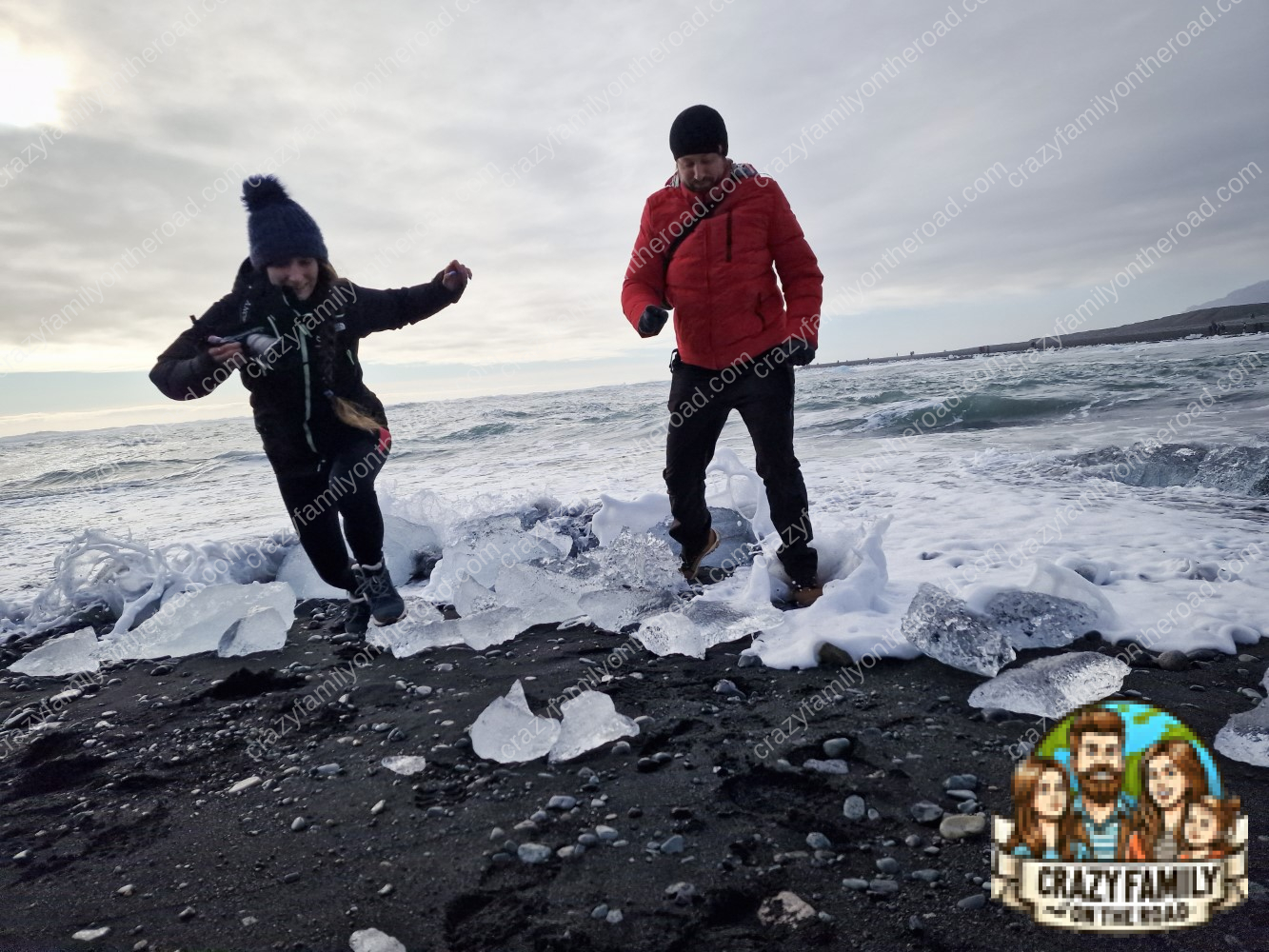
How is the ice getting here?
Unfortunately, the splendor of this beach also carries a painful message about the climate crisis. The breaking off and movement of the ice chunks is, in fact, a direct consequence of climate change and global warming, which are accelerating the melting of Iceland’s glaciers. As the ice tongue slowly moves towards the lagoon, huge chunks of ice break off and sink into the water. Eventually, the currents and tides drive these icy fragments towards the Atlantic Ocean, with some ultimately ending their journey at Diamond Beach. This breathtaking sight poignantly reminds us of just how fragile the balance of our planet truly is.
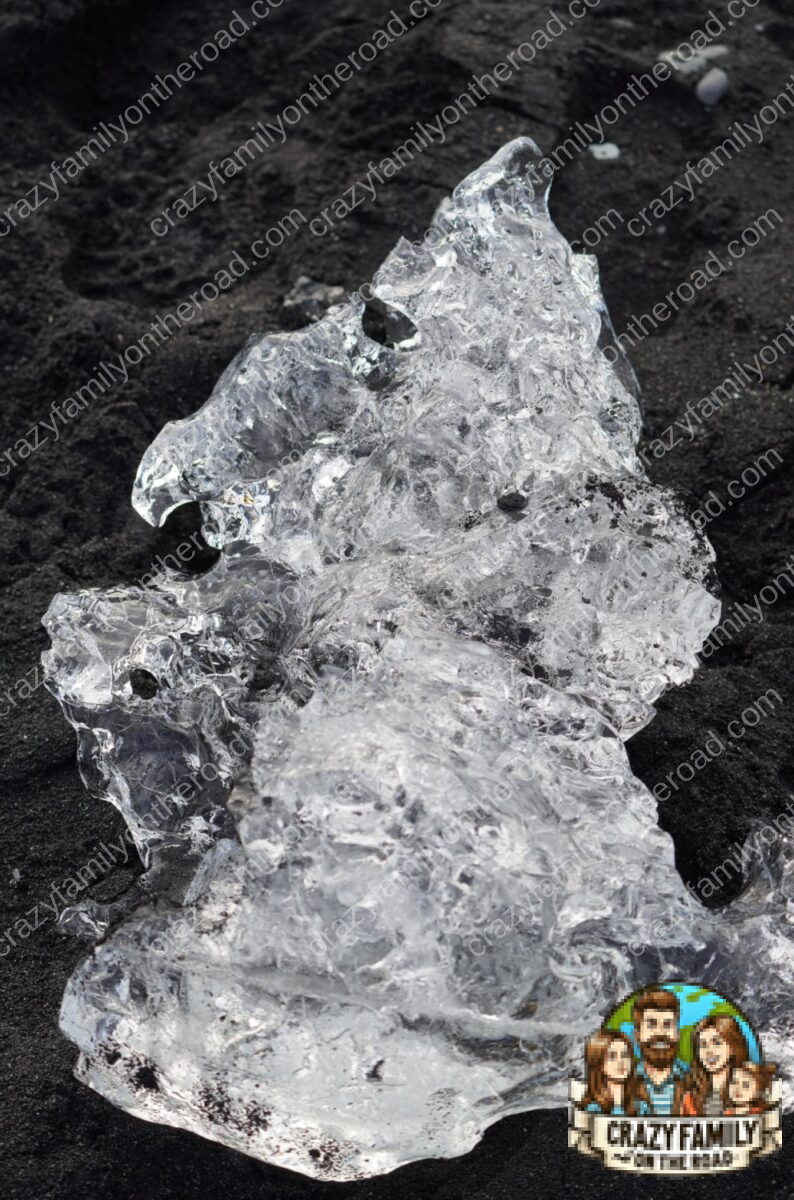
Be sure to take an organised hike on Vatnajökull Glacier. A guide will explain more and show you how much ice has already disappeared from this beautiful place. Precisely on Iceland’s glaciers you can see the extent of global warming with your own eyes.
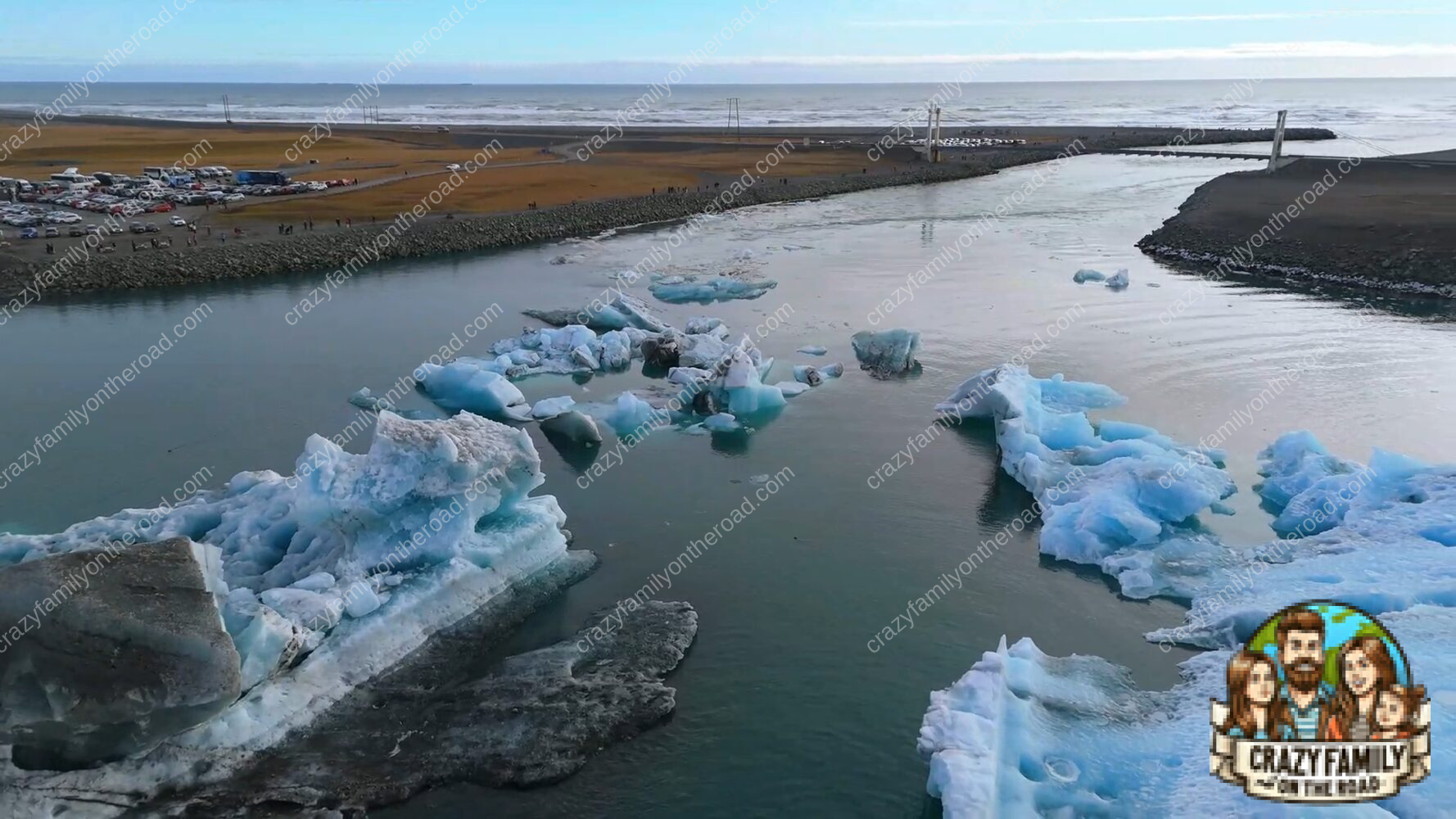
How to get to Diamond Beach?
Diamond Beach is part of several tour packages. However, if you have a rented car, you can get here from Reykjavík via the Ring Road. From Reykjavík, it takes about 4.5 to 5 hours to get to Diamond Beach, as you’ll be driving about 370 kilometres, so it’s best to spend the night somewhere in the south, closer to the glacier.
From Skógafoss Waterfall it is slightly shorter – about 2 hours drive (about 200 kilometres). If you start from Fjaðrárgljúfur Canyon, you’re looking at about a 1.5-hour drive, roughly 120 kilometres, which was exactly the case for us. We spent the night near the canyon and set off in the morning to see the Icelandic ice.
